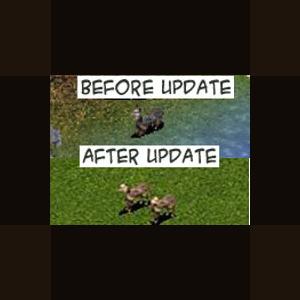About This File
Mainland Serow
Author: LAwebTek
The mainland or Asiatic serow (Nemorhaedus sumatraensis) ranges from the Himalayas of Nepal, north to Gansu and Anhui in China, and south to the Malay Peninsula and Sumatra. Their long, mule-like ears are narrow, pointed and tasseled, and usually longer than their short, black horns. Mainland serows have short beards, a long, heavy mane and less bushy tails than Japanese and Taiwanese serows. Coat color varies greatly by region, however the mainland serow is typically blackish-gray to reddish-brown.
Length and Shoulder Height
Adult length: 39-71 inches (100-180 cm)
Adult shoulder height: 28-43 inches (70-110 cm)
Weight
56-309 pounds (25-140 kg); mainland serows are much larger and heavier than Japanese and Taiwanese serows.
Life Span
Life span in the wild is unknown; serows live over 10 years in zoos.
Diet
Ungulates cannot manipulate food with their forelimbs, so their lips, teeth and tongues are modified to take food directly from the plant or ground and grind vegetation like a mill. Serows, like all Bovidae, are specialized herbivores called ruminants.
In the wild: Serows are predominantly browsers with selective food habits. They eat herbs, leaves of trees or shrubs, shoots, twigs and grasses.
At the zoo: Herbivore pellets, alfalfa, timothy grass hay and seasonal browse, some fruits and vegetables.
Reproduction
Mating takes place in fall or winter. After a gestation period of 200 to 230 days, a single kid weighing about 8 pounds (3.5 kg) is born during the months of May to September. The kid will reach full size and leave the mother’s territory at 12 months and become sexually mature by 3 years.
Life Cycle
Serows, especially males, are usually solitary but sometimes are found in pairs or family groups of up to seven. Both sexes mark territories by rubbing onto rocks and branches a secretion from their preorbital glands. The territory of a solitary individual may be only three acres (1.2 ha), while that of a family group may be up to 54 acres (22 ha).
Although they are less agile and move less rapidly than gorals, serows are sure-footed, clambering easily along well-defined trails on mountain slopes. They feed at dawn and dusk. During the heat of the day, they take shelter in favorite resting places among rocks, in caves, under overhanging rocks or cliffs, or in dense underbrush, hidden from predators such as bears, tigers and wolves. Their smell, vision and hearing are acute.
Resource Defenders
Serows are resource defenders and reflect the ancestral body plan of all Caprinae. Resource defenders are more primitive, tend to be solitary and territorial, and live in small areas of highly productive and diverse habitats which are easily defended. Fossil Caprinae dating back 35 million years closely resemble serows. During the ice ages, most Caprinae species increased in body and horn size, adapted to more severe climates and land forms, and became grazers, roaming over larger areas in cooperative herds. The more familiar goat antelope, the mountain goat Oreamnos americanus, may have evolved from serow-like ancestors in a glacial environment.
Fascinating Facts
Serows are the most primitive living Caprinae. Their fossils appear in the late Pliocene of 7 to 2 million years ago!
Serows can be aggressive and will attempt to fight off predators, even Asian black bears, with their dagger-like horns!
Serows will swim between the small islands near the Malay Peninsula!
2003 LAwebTek
Updated 2010-11-03
Just to save space with less in zip and smaller image.
Nothing new.



Recommended Comments
There are no comments to display.
Create an account or sign in to comment
You need to be a member in order to leave a comment
Create an account
Sign up for a new account in our community. It's easy!
Register a new accountSign in
Already have an account? Sign in here.
Sign In Now